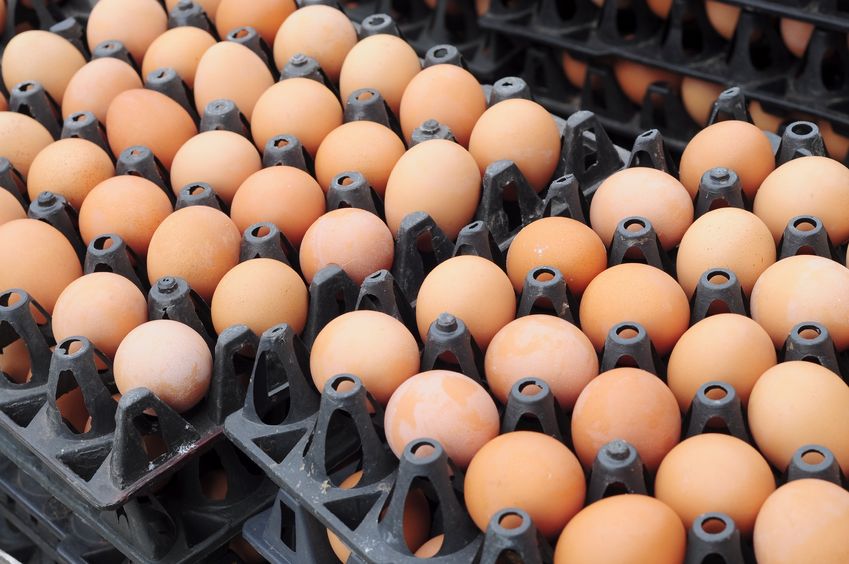
Some of the eggs found to have been contaminated during the recent fipronil crisis may have been clear of the chemical, new analysis has found.
The revelation that some test results may have been wrong comes in a European Commission report following an assessment of the performance of labs involved in the fipronil testing.
Whilst 94 per cent of the laboratories passed the assessment, six laboratories were found to be unsatisfactory and the assessors found that positive tests for fipronil declared at one laboratory may have been wrong.
"It should be noted that one participant with a very unsatisfactory result for fipronil sulfone analysed 100-500 egg samples since July 2017, which might have resulted in false positive results," the assessors said in their report. The identity of the laboratory involved has not been made public.
The report is the result of a proficiency test carried out by the Joint Research Centre (JRC), the European Commission’s science and knowledge service, following a request by the Belgian Government.
The fipronil scandal arose when the chemical was found in hens in the Netherlands that had been treated for red mite with a treatment that included the toxic substance.
Fipronil is banned from use on animals in the food chain. The chemical is thought to have arrived in the Netherlands from Belgium.
Millions destroyed
Millions of hens have been culled, millions of eggs have been destroyed, eggs and prepared foods recalled and two people were arrested following a criminal investigation in the Netherlands.
Lawyers acting for supermarkets and food companies have warned Dutch farmers that they will be seeking damages from them.
Eric Hubers, chairman of the country's egg industry association, Ovoned, told FarmingUK that the companies wanted not only the cost of egg and product recalls covered, but they also wanted damages for loss of profits.
Eggs and products containing eggs have been withdrawn from stores across Europe, including the UK, following the discovery of fipronil.
In the UK the Food Standards Agency (FSA) says about 700,000 potentially contaminated eggs from Europe are thought to have been imported into the UK for use as egg product and four supermarkets withdrew some foods from their shelves as a precaution.
However, it says there is no evidence to suggest that the banned chemical has been used on British poultry farms.
British farms clear
Whilst tests on British farms have shown the UK layer flock to be clear of fipronil, the British Egg Industry Council (BEIC) still intends to amend its code to include an approved list of pesticides for use on the farm.
Anyone producing eggs under the Lion label will only be able to use pesticides from the approved list.
The assessment on the laboratories involved in fipronil testing was requested by the Belgian Government on August 16, some weeks after the crisis arose.
The authors of the resulting report said in their paper: "The aim of this PT (proficiency test) is to assess the competence of official control laboratories (OCLs) and national reference laboratories (NRLs) in the EU member states for the determination of the content of the insecticide fipronil in eggs around the regulated maximum residue level (MRL).
"Two well-characterised, homogeneous and stable sets of samples of frozen liquid eggs were prepared and distributed to participants for analysis, in order to evaluate their capability to identify properly non-compliant food commodities."
They said that a total of 85 NRLs and OCLs were assesses from 22 EU member states, as well as Norway, Serbia and Albania.
Each laboratory received two plastic screw cap vials containing 40 grammes of frozen egg. Sample A was spiked with fipronil and fipronil sulfone. Sample B was unaltered. The participating laboratories were allowed to choose their own method of analysis.
"The performance of the participating laboratories in determining fipronil in the test material was expressed as z scores," said the authors.
"The vast majority of the participants (94 per cent) obtained satisfactory z scores, thus confirming the analytical capability of most of the participating NRLs and OCLs to enforce the European Regulations."
Poor performing
The poor performing laboratories have been advised to identify why they had failed to meet the standard in order to avoid inaccurate results in the future.
In their report, the assessors said that contaminated eggs and egg products had spread throughout EU member states and also outside Europe.
"According to the RASFF (Rapid Alert System for Food and Feed) alert triggered by the Belgian authorities, chicken eggs were found to contain from 0.0031 to 1.2 mg/kg fipronil in eggs," they said. "Several hundred farmers, food producers and supermarkets pulled millions of eggs off the shelves."
Whilst fipronil was a broad spectrum insecticide for use as a plant protection product, the World Health Organisation (WHO) had classified it as a moderately hazardous class II pesticide, they said.
It was toxic by oral, inhalation and dermal acute exposure. It was currently banned by the EU to treat animals destined for human consumption.
